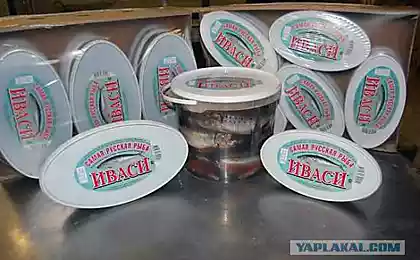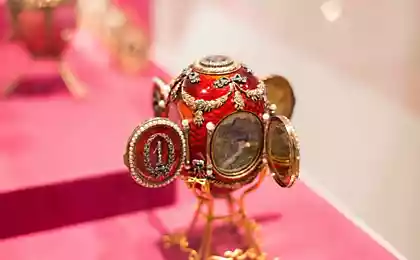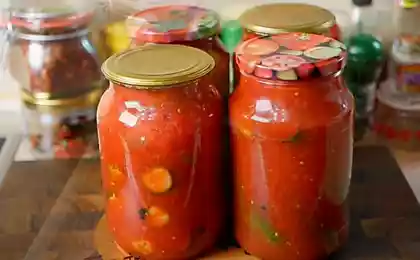1154
The history of "sprats in tomato sauce"
"Sprat in tomato sauce" is one of the symbols of the Soviet era. Of course, the popularity of this product is not due to the fantastic taste, and low cost, and availability, and many even today gastronomic excesses from time to time to buy a jar - another of canned food to give her memories of Soviet youth.
We will share with you the history of the appearance and methods of use "sardines in tomato sauce»
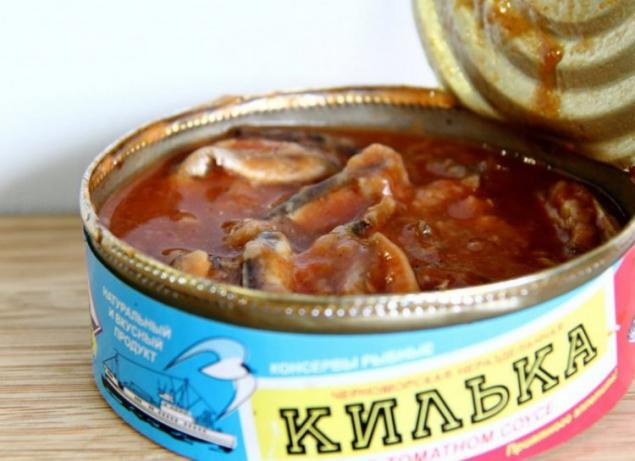
Sprat first mentioned in the book the diplomat Gunn Airman, which appeared in the 70s of the XVII century. Gunn leads it Livonian song fragment, which states that "if the sprat is translated into the sea, while the Swedes face death." It is these people, fully owned until 1710 the Baltic Sea, was the first to use this type of mass fish. Naturally, while sprat was used exclusively in the form of sun-dried and roasted.
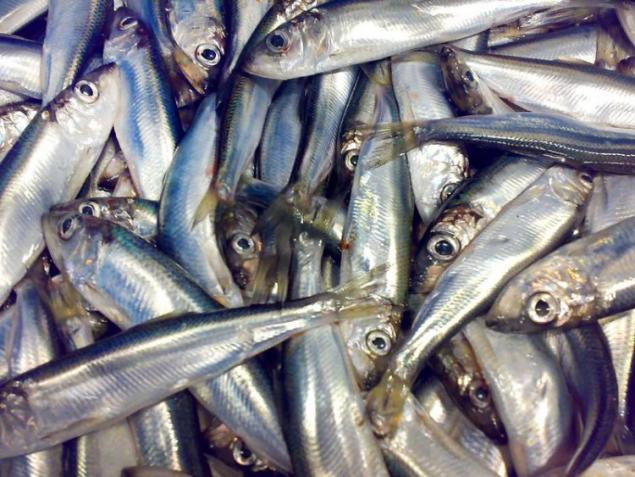
The appearance of the first canned sprats contributed Age of Discovery, when the need for dolgohranyaschihsya products was higher than ever before. Europe at that time makes, mainly meat and vegetables, while production in Russia to specialize in fish. Of course, sprats at the time was not held in high esteem, and rolled into the banks canned starlet, burbot, white salmon and stellate sturgeon. We think that one would not now refused canned stellate sturgeon.
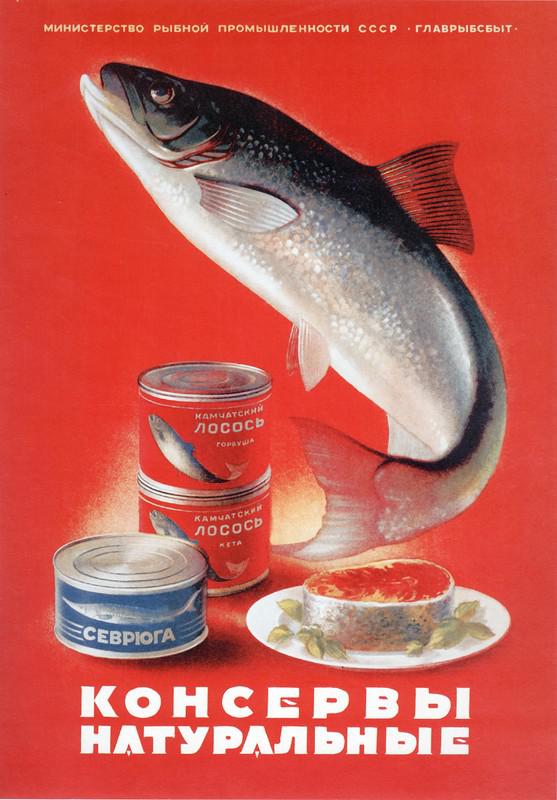
Mass production of canned "sprats in tomato sauce" began in the mid 50s of the XX century. Khrushchev personally tasted a novelty Kerch fish plant and assured the people that "the national best product you can imagine", and canned themselves did not disappear from the shelves, even in hard times of scarcity. And the price was more than from the low.
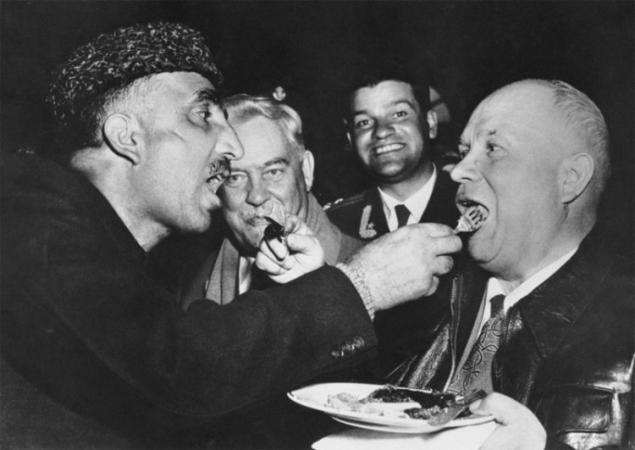
"Sprat in tomato sauce" has always been in the refrigerator for every Soviet citizen, as an occasion to open a jar - another long search is not necessary. For many, a jar of "sprats in tomato sauce" was the only snack when drinking various beverages "for three" and the ever-hungry students allowed to make up for losses canned phosphorus in the body, as other fish was not available.
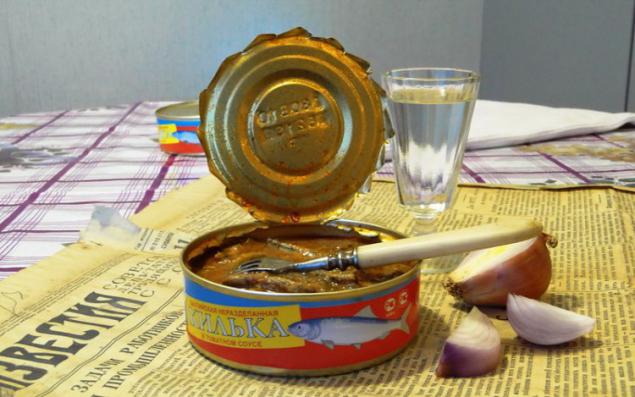
Experienced hostess could be made of these simple canned variety of dishes: salads, soups, burgers, and even casseroles. That's really really versatile food that can satisfy even the most discerning palates.
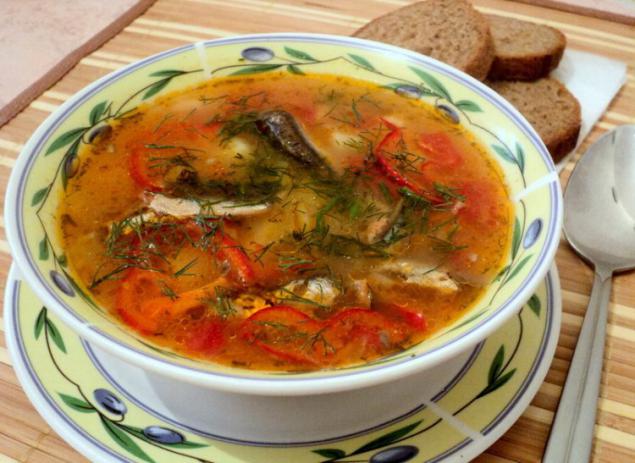
Recipe "sprats in tomato sauce" is extremely simple: fish, water, tomato paste, salt, sugar, sunflower oil, acetic acid, spices. Nothing extra. But nevertheless preserves different manufacturers differ in taste and appearance. All the matter in the sauce, because there are about 30 recipes, so that the taste of "the most canned goods" may vary significantly.
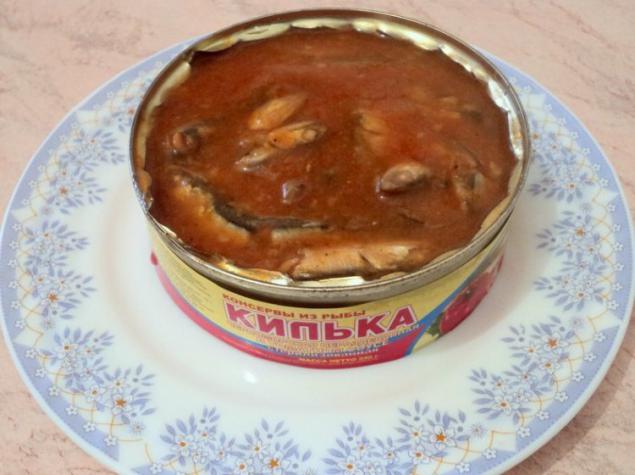
Canned "Sprat in tomato sauce" have become a real symbol of the Soviet Union, because even Margaret Thatcher after his visit to the USSR not only spoiled his favorite canned cat these, but they were treated during his visit.
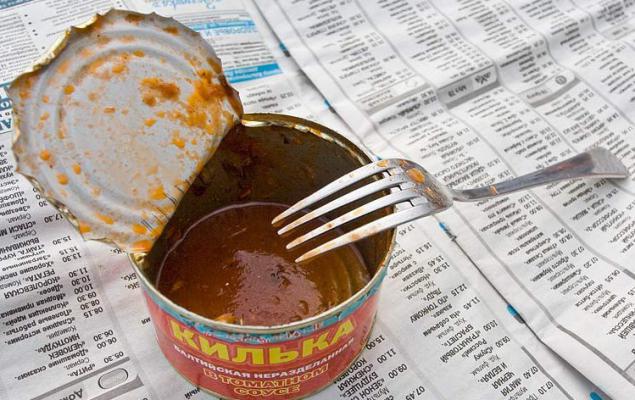
In modern Russia, its popularity remains at the same high level, because many in the early '90s was "Sprat in tomato sauce" was the only delicacy. And today, many take these cans of habit, knowing exactly what to expect inside the can.
Do you like "sardines in tomato sauce?" Do you have any - any memories associated with these canned?
We will share with you the history of the appearance and methods of use "sardines in tomato sauce»

Sprat first mentioned in the book the diplomat Gunn Airman, which appeared in the 70s of the XVII century. Gunn leads it Livonian song fragment, which states that "if the sprat is translated into the sea, while the Swedes face death." It is these people, fully owned until 1710 the Baltic Sea, was the first to use this type of mass fish. Naturally, while sprat was used exclusively in the form of sun-dried and roasted.

The appearance of the first canned sprats contributed Age of Discovery, when the need for dolgohranyaschihsya products was higher than ever before. Europe at that time makes, mainly meat and vegetables, while production in Russia to specialize in fish. Of course, sprats at the time was not held in high esteem, and rolled into the banks canned starlet, burbot, white salmon and stellate sturgeon. We think that one would not now refused canned stellate sturgeon.

Mass production of canned "sprats in tomato sauce" began in the mid 50s of the XX century. Khrushchev personally tasted a novelty Kerch fish plant and assured the people that "the national best product you can imagine", and canned themselves did not disappear from the shelves, even in hard times of scarcity. And the price was more than from the low.

"Sprat in tomato sauce" has always been in the refrigerator for every Soviet citizen, as an occasion to open a jar - another long search is not necessary. For many, a jar of "sprats in tomato sauce" was the only snack when drinking various beverages "for three" and the ever-hungry students allowed to make up for losses canned phosphorus in the body, as other fish was not available.

Experienced hostess could be made of these simple canned variety of dishes: salads, soups, burgers, and even casseroles. That's really really versatile food that can satisfy even the most discerning palates.

Recipe "sprats in tomato sauce" is extremely simple: fish, water, tomato paste, salt, sugar, sunflower oil, acetic acid, spices. Nothing extra. But nevertheless preserves different manufacturers differ in taste and appearance. All the matter in the sauce, because there are about 30 recipes, so that the taste of "the most canned goods" may vary significantly.

Canned "Sprat in tomato sauce" have become a real symbol of the Soviet Union, because even Margaret Thatcher after his visit to the USSR not only spoiled his favorite canned cat these, but they were treated during his visit.

In modern Russia, its popularity remains at the same high level, because many in the early '90s was "Sprat in tomato sauce" was the only delicacy. And today, many take these cans of habit, knowing exactly what to expect inside the can.
Do you like "sardines in tomato sauce?" Do you have any - any memories associated with these canned?
